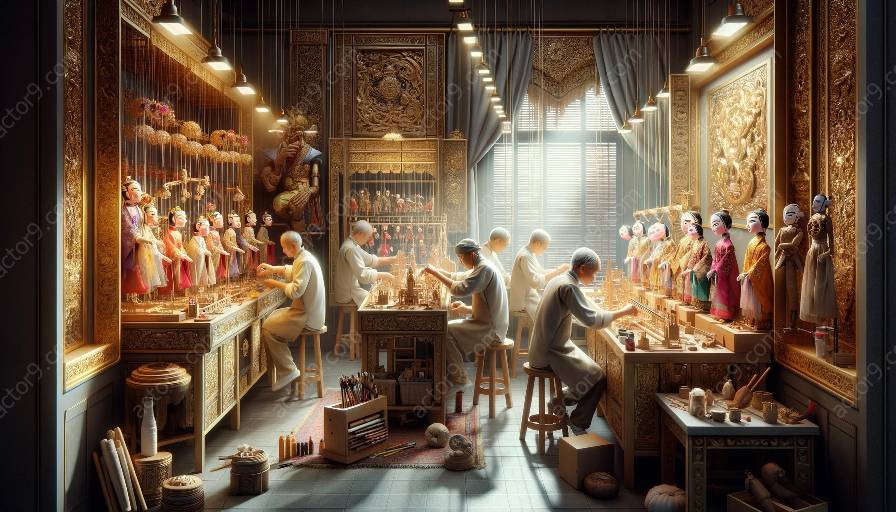Modern theatre has witnessed a remarkable evolution in puppet construction techniques, significantly impacting the art of puppetry. This comprehensive topic cluster explores the seamless compatibility of puppet construction with modern theatre and how these adaptations have revolutionized the world of puppetry.
The Evolution of Puppet Construction
Historically, puppet construction involved traditional materials such as wood, fabric, and strings, resulting in puppets with limited mobility and expression. However, with advancements in materials and technology, modern puppet construction has embraced innovative approaches to create puppets with enhanced realism and versatility.
Materials and Techniques
Contemporary puppet builders now utilize a diverse range of materials, including lightweight alloys, advanced polymers, and flexible fabrics, allowing for more intricate designs and detailed articulation. Cutting-edge techniques such as 3D printing and animatronics have further expanded the possibilities for creating lifelike puppets with fluid movement and emotive capabilities.
Compatibility with Puppetry
Despite these modern transformations, puppet construction remains deeply intertwined with the essence of puppetry. The fundamental principles of puppetry, such as manipulation, performance, and storytelling, continue to underpin the construction process, ensuring that modern puppets retain their connection to this ancient art form.
Enhanced Artistic Expression
The adaptability of modern puppet construction techniques has empowered puppeteers to explore new realms of artistic expression. From elaborate marionettes to sophisticated shadow puppets, contemporary puppetry has been enriched by the fusion of traditional craftsmanship with cutting-edge construction methods.
Revolutionizing Puppetry
Modern adaptations in puppet construction have revolutionized the theatrical landscape, transcending the boundaries of traditional puppetry and captivating audiences with visually captivating performances. This evolution has not only elevated the visual and technical aspects of puppetry but also expanded its narrative potential, enabling the creation of compelling and immersive storytelling experiences.
Cultural Impact
Furthermore, the modernization of puppet construction has contributed to a renewed appreciation for puppetry across diverse cultures. Through cross-cultural collaborations and innovative interpretations, contemporary puppetry has become a dynamic and inclusive art form that resonates with global audiences.
Conclusion
The adaptation of puppet construction to modern theatre has ushered in a new era of innovation and creativity, elevating the art of puppetry to unprecedented heights. By embracing the fusion of traditional craftsmanship with contemporary techniques, puppet construction continues to shape the future of theatre, inspiring awe-inspiring performances that captivate hearts and minds.


























